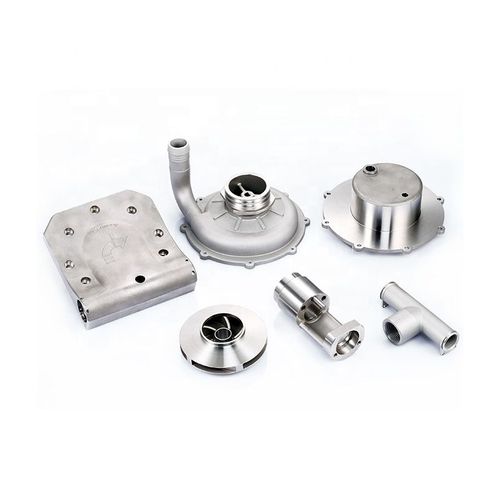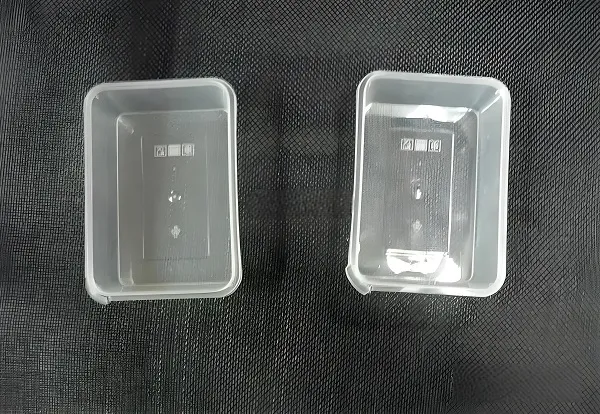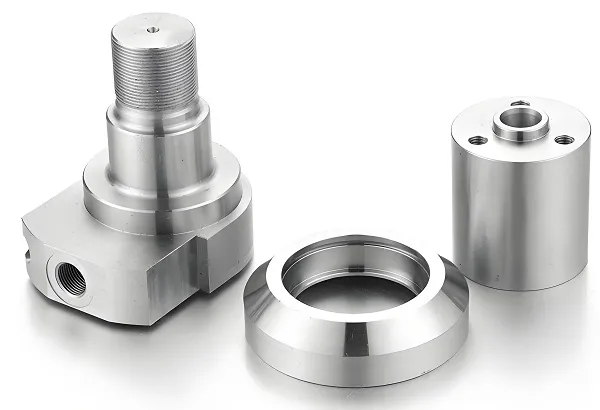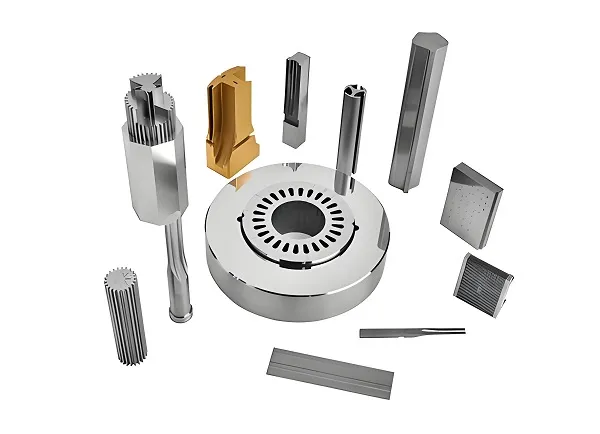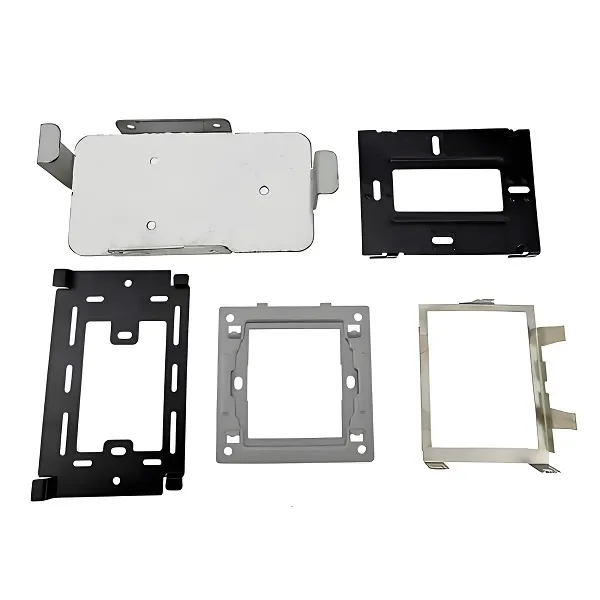With the widespread application of lightweight metals, aluminum – processed parts are becoming the choice of many industries. In the field of precision manufacturing, aluminum alloys, due to their excellent strength – to – weight ratio, machinability, and thermal conductivity, have become the preferred materials for structural components in industries such as aerospace, automotive, and medical.
CNC Machining Aluminum Part Materials
Aluminum alloys, because of their light weight, high strength, and good corrosion resistance, are ideal materials for CNC machining. However, different series of aluminum alloys (such as Series 1 pure aluminum, Series 6 magnesium – silicon alloys, Series 7 zinc alloys, etc.) vary in hardness, ductility, and thermal conductivity. Before processing, it is necessary to fully understand the material properties. For example, soft aluminum is prone to sticking to the tool, while hard aluminum causes significant tool wear. Only by selecting a matching process according to the material can defects such as deformation and burrs be avoided, ensuring processing stability.
6061 Aluminum: The most widely used heat – treatable aluminum alloy, while retaining most of the excellent qualities of aluminum. This grade has a wide range of mechanical properties and corrosion resistance. It can be manufactured by most common techniques and has good machinability in the annealed state.
6063 Aluminum: Commonly known as the architectural alloy. It has rather high mechanical properties, excellent finishing characteristics, and a high degree of corrosion resistance. It is most commonly used in various indoor and outdoor architectural applications and decorations. 6063 aluminum is used for aluminum extrusion applications.
5052 Aluminum: This is the highest – strength alloy among non – heat – treatable grades. Its fatigue strength is higher than that of most other aluminum alloy grades. It has good resistance to marine atmosphere and saltwater corrosion and excellent machinability.
7075 Aluminum: 7075 aluminum is currently one of the highest – strength aluminum alloys. It has an excellent strength – to – weight ratio and is very suitable for high – stress components. 7075 aluminum is a typical material with complex structures and high precision in the aviation industry.
6082 Aluminum: 6082 aluminum is a medium – strength alloy with excellent corrosion resistance. It is the strongest in the 6000 series of alloys. 6082 is known as a structural alloy. In sheet form, 6082 is the most commonly used alloy for machining. As a relatively new aluminum alloy, 6082 aluminum has high strength, such as high tensile strength, enabling it to replace 6061 aluminum in many applications.
Benefits of Using Aluminum in Machining:
- Strong and lightweight
- Excellent machinability
- Excellent corrosion resistance
- Higher electrical conductivity
- Resistance to low temperatures
- Surface treatment and anodizing potential
- Reduced production costs
- Recyclability
Uses of CNC Aluminum Parts
In the automotive industry, reducing vehicle body weight to improve fuel efficiency has always been one of the goals. By using CNC – machined aluminum alloy parts, automakers not only achieve lightweighting but also improve the overall performance and safety of the vehicle.
The same is true in the aviation field. Many key components of aircraft, such as engine mounts, wing structures, etc., are made of CNC – machined aluminum alloys, which ensure strength while reducing weight.
In consumer electronics, the aesthetics and durability of aluminum alloys have won the favor of consumers.
Matters Needing Attention in Aluminum Alloy Processing:
- Temperature setting and control of aluminum profiles. Generally, there is a certain error between the actual temperature and the displayed temperature. When setting the displayed temperature, it should be set according to the actual temperature of the equipment, and closely monitor the temperature fluctuations.
- Aging and heat preservation of aluminum profiles. The aging should be set strictly in accordance with the processing technology requirements, and the heat – preservation time should also be appropriate to prevent insufficient hardness due to insufficient aging or excessive aging.
- The extrusion loading of aluminum profiles should not be too dense. There should be a gap between materials. For aluminum profiles, especially small, thick materials that are not well – ventilated, a larger gap is required. When tubes, small parts, and sheet materials are loaded in one frame, placing the tubes at the bottom is beneficial for the aging cycle and air supply.
Why Do CNC Aluminum Parts Deform?
The amount of deformation of numerically – controlled processed aluminum shells is related to the complexity of the shape, the aspect ratio, and the wall thickness, as well as the rigidity and stability of the aluminum alloy model. Therefore, when designing an aluminum shell for a product, efforts should be made to minimize the impact of these factors on the deformation of aluminum alloy processed parts. Especially when customizing larger – sized aluminum – part processing shells, a reasonable structure should be ensured. Before processing in the factory workshop, strict inspections should also be carried out on the hardness, porosity, and other defects of the aluminum alloy material blanks to ensure the quality of the blanks and reduce the possibility of deformation of the customized aluminum – structure parts.
-
Complexity of the part shape
Parts with complex shapes, such as those with thin – walled, deep – hole, and slender – shaft structures, are more likely to deform during processing. Take thin – walled aluminum parts as an example. The thin – walled parts have low stiffness, and under the action of cutting force, they are prone to vibration and deformation. For example, when processing a thin – walled cylindrical aluminum part, during the turning of the outer circle, the thin – walled part undergoes elastic deformation due to the cutting force. After the tool leaves, the thin – walled part will cause a decrease in dimensional accuracy due to elastic recovery.
For aluminum parts with deep holes, during processing such as drilling and reaming, due to the large axial force of the tool and the poor rigidity of the deep hole, the axis is likely to bend and deform. The same is true for slender – shaft – type aluminum parts. Their length – to – diameter ratio is large, and during processing, due to insufficient self – stiffness, under the action of factors such as cutting force and gravity, they are prone to bending deformation.
-
Size of the part
When processing large – sized aluminum parts, due to their large size and heavy weight, clamping deformation is likely to occur during the clamping process. For example, when milling the plane of a large aluminum plate, if the clamping force is uneven, local deformation will occur at the clamping parts of the aluminum plate. Moreover, during the processing of large – sized aluminum parts, due to the large machining allowance, the cutting force generated when removing materials is also large, which makes it easier for the part to deform as a whole or locally.
Relatively speaking, although small – sized aluminum parts are small in size, if the processing accuracy requirements are very high, slight deformation may also cause the parts to be out of tolerance. For example, when processing small, precision aluminum parts, such as some small components in the aerospace field, even a few microns of deformation may affect their performance and assembly accuracy.
-
Structural symmetry of the part
Aluminum parts with a symmetrical structure are relatively more evenly stressed during processing and are less likely to deform due to uneven stress. For example, for a symmetrical aluminum disc part, during surface grinding, due to its symmetrical structure, the grinding force is relatively balanced in all directions, and the deformation of the part will be smaller than that of parts with an asymmetrical structure. For asymmetrical parts, such as aluminum parts with a cantilever structure, when processing the cantilever part, due to the poor rigidity of the cantilever end, under the action of cutting force, it is prone to large deformation.
Custom Aluminum Part Manufacturing
If you need help with custom aluminum processing projects, we will, with our technology, experience, and skills, become one of the most capable and cost – effective production sources. We strictly implement the ISO9001 quality system standard. Combining an efficient production process and flexible custom engineering enables us to deliver complex projects in a short time and provide excellent product quality. We also provide typical surface treatment operations for custom aluminum components, such as sandblasting, shot peening, polishing, electrophoresis, chromate treatment, powder spraying, painting, etc.
